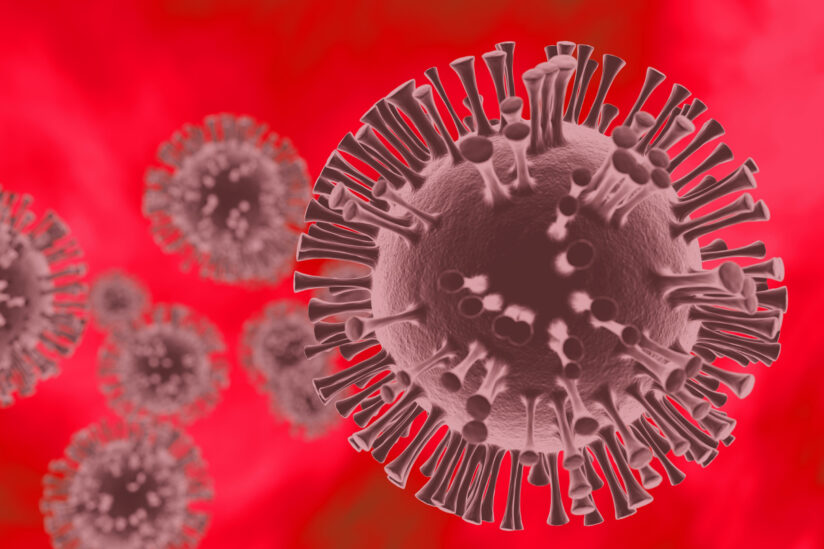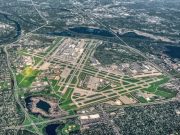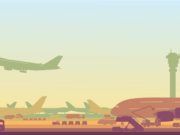
With vaccines against COVID-19 increasingly available worldwide, the aviation industry has begun anticipating recovery from the pandemic-induced losses that have marked the past year.
However, recovery depends not only on the industry’s own efforts to bolster air travel but also on factors outside its control, including the success of vaccines against the disease in all of its variations and the overall state of the economy.
“We can see the light at the end of the tunnel as vaccination programs roll out,” Alexandre de Juniac, director general and CEO of the International Air Transport Association (IATA) said. “But a safe and orderly restart will require careful planning and coordination by governments and industry, and we still face immense challenges containing the spread of new variants.”
In guidance issued several weeks into the pandemic in 2020, Flight Safety Foundation identified scores of recommendations that would need to be examined before operations could be reestablished, beginning with “consider system ability to accelerate from a prolonged period of reduced ops” and “consider a progressive and coordinated restart of operations.”1
Those considerations, included in the Foundation’s “COVID-19 Safety Roadmap” and “Safety Punch Lists,” also involved human factors and flight operations, including the ability to return crews to their normal “high workload” state and the possibility of increased risk because of a lack of currency. Similar considerations apply to air traffic controllers, airport personnel, maintenance technicians and ground personnel.
Since the pandemic took hold just over a year ago, all sectors of the industry have suffered — flights have been canceled, aircraft have been grounded, and pilots have had their flight time sharply reduced.
IATA data show that in January, worldwide airline passenger traffic, measured in revenue passenger kilometers, was 72 percent below that of January 2019, a year before the pandemic began; international passenger demand was down 85.6 percent from the January 2019 level; and domestic demand was down 47.4 percent. However, for the first time since the pandemic began, cargo traffic rebounded in January to the pre-COVID level.2,3
Despite de Juniac’s optimism, IATA also has noted the emergence of new variants of COVID-19 as well as new restrictions being issued by some governments to prevent travel.
Data from the National Business Aviation Association (NBAA) show that U.S. general aviation, including business and corporate aviation, has lost 50,000 jobs because of the pandemic and general aviation airports lost as much as 90 percent of traffic and revenue.4
Eurocontrol data reflect similar losses across the European air traffic network, with only 5 million flights recorded in 2020, down 55 percent from 2019; traffic within Europe fell 54 percent from 2019, and international flights fell 59 percent. At the close of 2020, 51 percent of the more than 8,000 aircraft based in Europe were grounded, and 191,000 workers in the aviation sector had lost their jobs.5
Unprecedented Challenges
“The challenges facing the aviation sector are unprecedented, and many uncertainties remain as to the pace and extent of recovery,” Heather Krause, a director of the U.S. Government Accountability Office (GAO) physical infrastructure team, told a U.S. House of Representatives subcommittee on March 2.
In testimony submitted to the Aviation Subcommittee of the Transportation and Infrastructure Committee, Krause added, “Demand for air travel remains far below pre-pandemic levels with the exception of certain leisure markets. Notably, the most profitable segments of the aviation industry — international and corporate air travel — have only minimally recovered. Leisure travelers have focused more on domestic and shorter-haul international destinations that are less profitable. Some businesses have relied more heavily on virtual meetings, which has led to a substantial reduction in business trips.”6
She cited analysts’ projections that it may take until 2023 or later for air traffic to return to the pre-pandemic levels of 2019 and said that recovery may proceed across different sectors of the industry at varying speeds.
“Airline representatives are optimistic that air travel demand will pick up in the second half of this year as a significant portion of the flying public becomes vaccinated,” Krause said. “Similarly, economists project that the economy will also recover in the second half of 2021 as employment levels, consumers’ disposable income, business growth and the associated demand for corporate travel all rebound.”
She added that, according to credit rating agencies, low-cost airlines that focus on leisure travelers are likely to recover more quickly than airlines that rely primarily on business travelers and international flights. Manufacturers and repair stations may face longer recovery periods, as operators delay buying new aircraft and try to limit maintenance, she said.
Although the federal government has provided billions of dollars to help the industry keep employees on the payroll, pay rent and meet other essential costs, future assistance may take other forms, including worker retention incentives, retraining and building up the supply of new applicants for careers in aviation manufacturing and maintenance, she said.
‘Significant Uncertainty’
NBAA President and CEO Ed Bolen told the subcommittee that further government relief measures might be needed.
“The ongoing reductions in business travel and the potential for additional COVID-related (impacts) create significant uncertainty for our community,” he said, adding that existing federal programs have helped keep many commercial aviation operators in business.
He encouraged future government investment in “the next generation of infrastructure needs,” which should be designed to support both general aviation and advanced air mobility – which NBAA describes as a concept involving electric vertical takeoff and landing aircraft to move people and cargo.
‘Not Like Flipping a Switch’
Capt. Joseph DePete, president of the Air Line Pilots Association, International (ALPA), credited the U.S. federal government with providing financial assistance, through the Payroll Support Program, to airline industry employees, including prohibitions on furloughs.
“As a result, despite the worst year in airline history, roughly 83 percent of employees remain in the industry; pilots and other personnel have ensured the continuity of vaccine distribution and travel; and a broader economic fallout … has been blunted,” he said in testimony to the subcommittee. “Importantly, if not for this unprecedented program, the airline industry would be in tatters; this hearing would instead be about industry bankruptcies, devastating challenges to cargo and passenger throughput and the potentially thousands of unemployed pilots and other airline employees who would be unable to respond to eventual demand.”
Keeping pilots in their jobs is essential to enabling airlines to ramp up their schedules quickly when demand returns, DePete said, adding that sending pilots back to the flight line after a long period of not flying is “not like flipping a switch,” but will require preparations. ALPA is working with North American air carriers to ensure that pilots will have access to additional proficiency training if they want it, he said.
“Pilots cannot simply return from unemployment to operate airline aircraft,” he said. “They are subject to recency training requirements and medical approvals and security clearances. … [I]f you are an airline, the last thing you would want in the midst of the largest downturn in the history of the industry is not being able to fully satisfy a recovery in passenger demand because you cannot train pilots fast enough.”
ALPA is monitoring demand, he said, “and we plan to help get pilots back into training as soon as necessary. Getting furloughed and inactive pilots fully qualified ahead of an accelerated demand curve will help mitigate the impacts from any potential chokepoints in the training process and ensure the speediest return to service.”
National Plan
Aviation Subcommittee Chairman Rep. Rick Larsen, a Washington Democrat, endorsed the development in the United States of a national aviation preparedness plan to protect the health of passengers and crew in case of a future public health crisis.
The GAO first recommended that the Transportation Department work with other federal agencies to create such a plan after the 2014 Ebola virus outbreak. The agencies took no significant steps in that direction, but Larson has sponsored legislation to require the government to work with industry stakeholders to prepare a plan.
Lance Lyttle of the American Association of Airport Executives told the subcommittee the pandemic has “made clear that this type of commonsense and collaborative approach … is long overdue.” Lyttle, the managing director of Seattle-Tacoma International Airport, added that “better coordination between the federal government and aviation stakeholders would help make our nation’s aviation system safer for passengers and workers.”
ICAO’s Recovery Platform
International Civil Aviation Organization (ICAO) President Salvatore Sciacchitano has said that “solidarity, innovation and sustainability” should be a focus of every nation’s COVID-19 recovery plans.
“We must learn the lessons this disease is teaching us and make our global network more resilient to future pandemic threats,” Sciacchitano said in a November speech to industry leaders.
The ICAO Council’s Aviation Recovery Task Force (CART)7 says its goal is to provide “practical, aligned guidance to governments and industry operators in order to restart the international air transport sector and recover from the impacts of COVID-19 on a coordinated global basis.”
The CART “Take-off Guidelines” have been updated to include not only recommendations on COVID-19 testing, use of masks, and public hygiene but also measures related to maintaining aviation safety as air travel increases.
Overall, the document calls for “a phased approach to enable the safe return to high-volume domestic and international air travel for passengers and cargo.” The guidelines begin with Stage 0, marked by travel restrictions and minimal movement of passengers between airports, and proceed through Stage 4, “when specific and effective pharmaceutical interventions are readily available in most countries,” ICAO says.
The approach involves the introduction of “a core set of measures to form a baseline aviation health safety protocol to protect air passengers and aviation workers from COVID-19. These measures will enable the growth of global aviation as it recovers from the current pandemic.”
ICAO cautioned, however, that each stage of the recovery may require revisions of the guidelines to best achieve the objectives of safe air travel that incorporates new public health measures and recognition of aviation’s role in the global economic recovery
Recovery measures should “capitalize on the sector’s longstanding experience and apply the same principles used for safety and security risk management,” ICAO said. “This includes monitoring compliance, reviewing the effectiveness of measures at regular intervals and adapting measures to changing needs as well as improved methods and technologies.”
Coping With Inactivity
ICAO guidance singles out problems associated with the lack of work over the past year for pilots, air traffic controllers, airport staff and others.
“As states work to restart air travel, a large proportion of the global fleet, air crew, airport operations staff and air traffic controllers that have been inactive for prolonged periods will need to be reactivated and retrained,” ICAO said. “To ensure a safe restart, states should take the necessary steps to mitigate the safety risks association with such reactivation.”
Travel Pass
IATA urges governments to consider several key elements as they develop plans for returning to normal in the wake of the pandemic, including allowing the reopening of borders after health care workers and the most vulnerable populations have been vaccinated. A globally standardized approach to COVID-19 testing and vaccinations is critical, IATA says, “particularly with regard to equivalent treatment of different vaccines and mutual recognition and acceptance of vaccine certificates.”
The organization says its IATA Travel Pass app would help manage relevant vaccination information, enabling passengers to digitally manage their documentation throughout their travels.
Both ICAO and IATA recommend that crewmembers be exempt from the testing processes designed for passengers, and instead be subject to testing at their home bases.
Other measures in place to fight COVID-19 should be continued, IATA said. Among those measures are the enhanced cleaning and disinfection of airplane cabins, the use of hospital-grade HEPA air filters and the wearing of masks.
Image: © Theo Gottwald | Dreamstime.com
Notes
- Flight Safety Foundation. Pandemic: Non-Medical Operational Safety Aspects Supplemental Materials, Version 2. May 2020. (See especially “Safety Aspects of Re-Establishing Operations,” pages 19-27. https://flightsafety.org/wp-content/uploads/2020/05/COVID-19-Roadmap-V2.pdf The Foundation has published related information on its COVID-19 Crisis Resources pages. https://flightsafety.org/toolkits-resources/covid-19-safety-roadmap-and-punch-lists/
- IATA. “From Bad to Worse: January Passenger Demand Falls Further.” March 2, 2021. https://www.iata.org/en/pressroom/pr/2021-03-02-02/
- IATA. “January Air Cargo Demand Recovers to Pre-COVID Levels.” March 2, 2021. https://www.iata.org/en/pressroom/pr/2021-03-02-01/
- NBAA. Testimony (by Ed Bolen) before the Subcommittee on Aviation, Committee on Transportation and Infrastructure, House of Representatives: “COVID-19’s Effects on U.S. Aviation and the Flight Path to Recovery.” March 2, 2021.
- Eurocontrol Aviation Intelligence Unit. Think Paper No. 8: “What COVID-19 Did to European Aviation in 2020, and Outlook 2021.” Jan. 1, 2021. https://www.eurocontrol.int/sites/default/files/2021-02/eurocontrol-think-paper-8-impact-of-covid-19-on-european-aviation-in-2020-and-outlook-2021.pdf
- GAO. Testimony (by Heather Krause) before the Subcommittee on Aviation, Committee on Transportation and Infrastructure, House of Representatives, “COVID-19 Pandemic: Preliminary Observations on Efforts Toward and Factors Affecting the Aviation Industry’s Recovery.” March 2, 2021. https://transportation.house.gov/imo/media/doc/Krause%20Testimony.pdf
- ICAO. “Council Aviation Recovery Task Force (CART) Report.” https://www.icao.int/covid/cart/Pages/default.aspx


